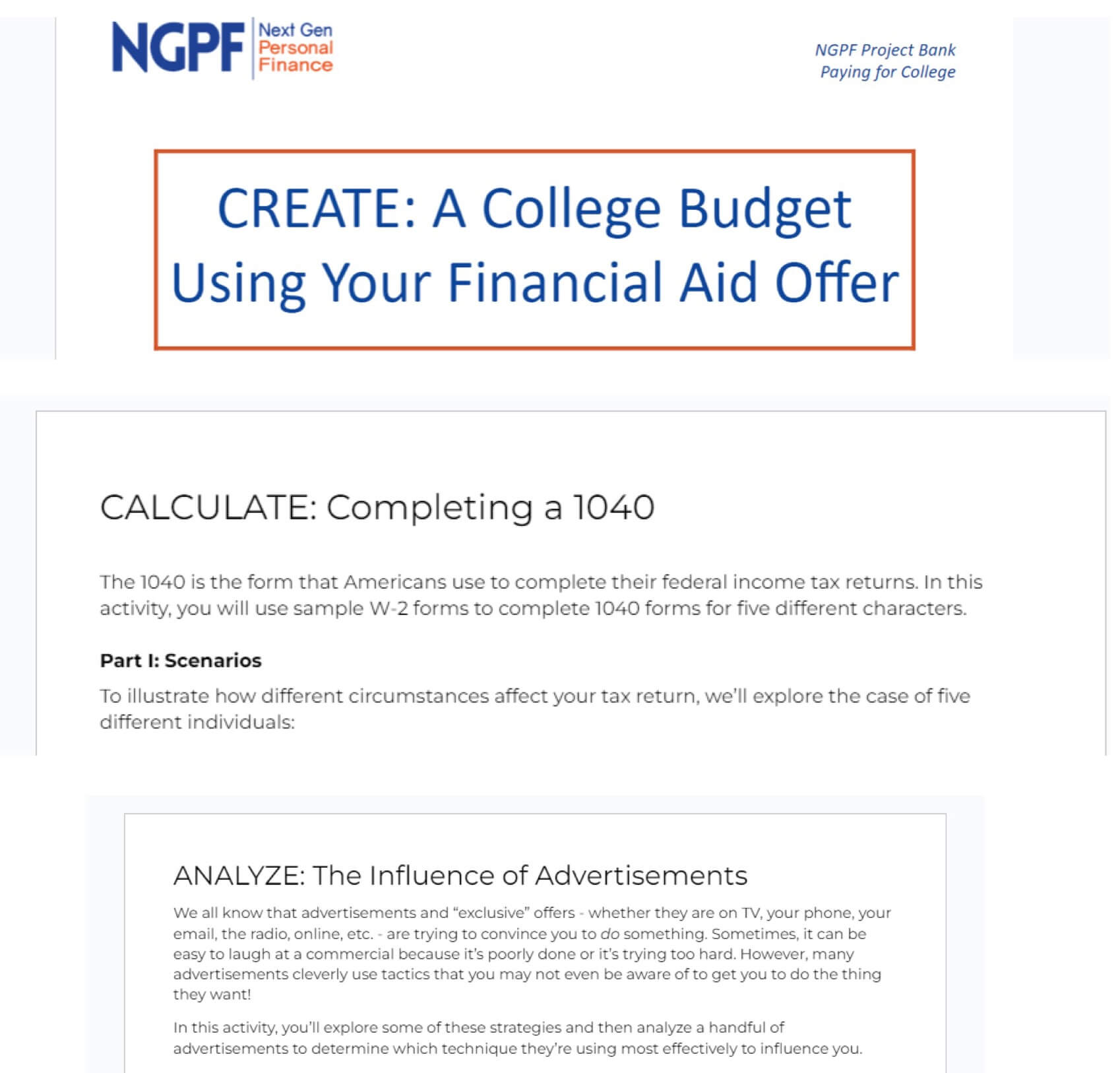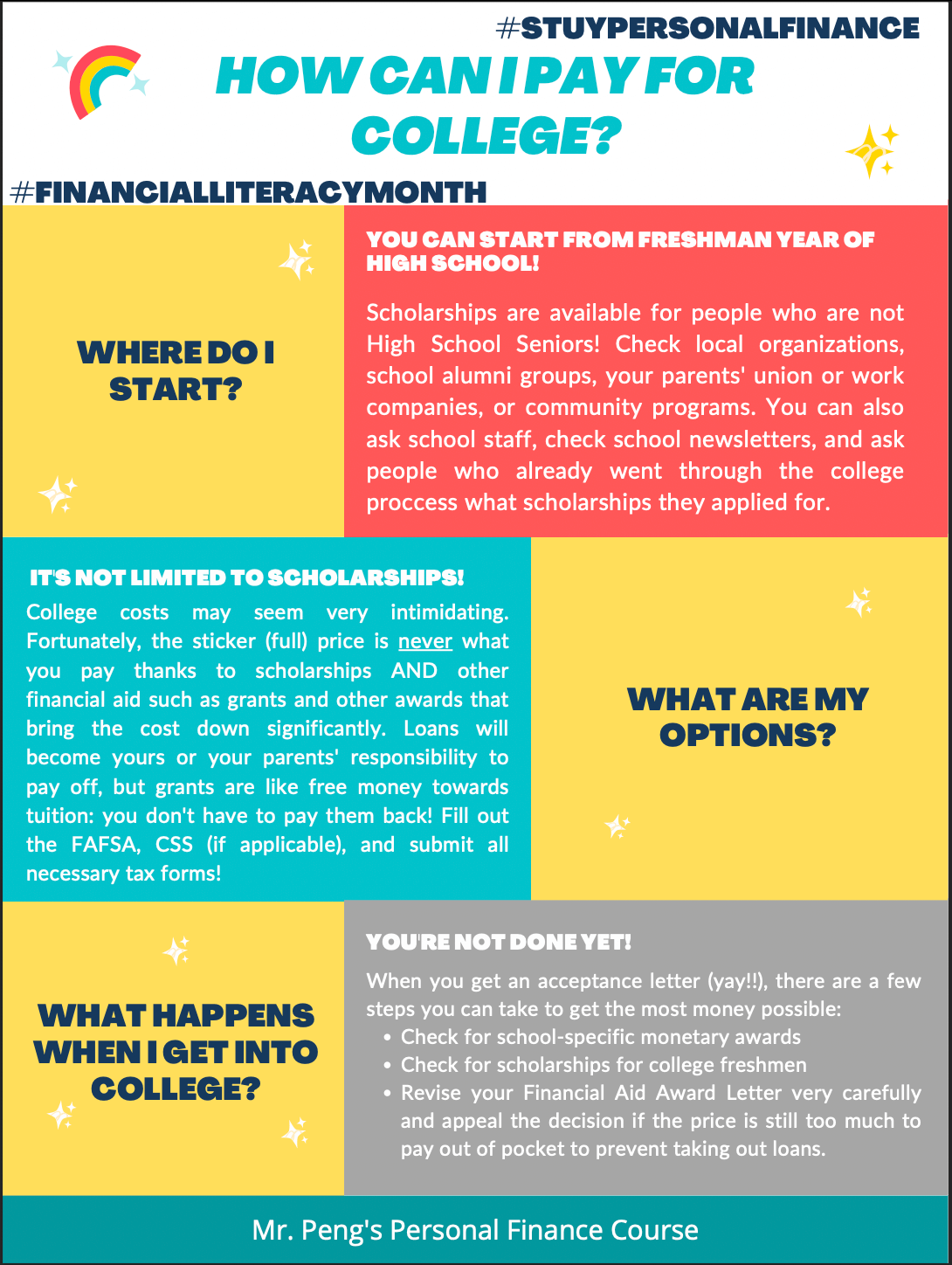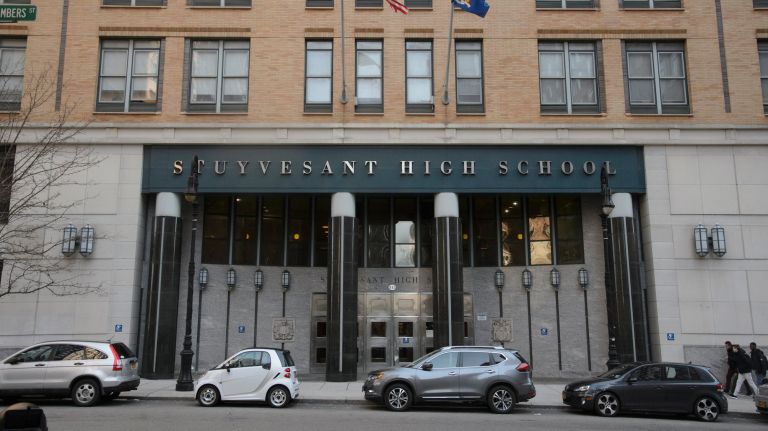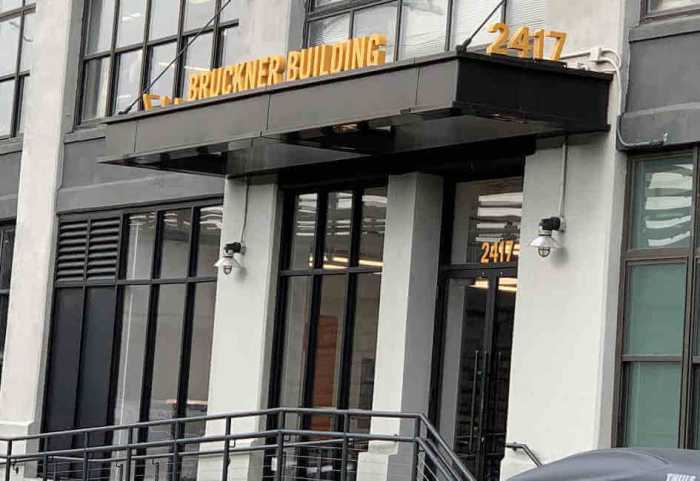Personal finance is in high demand at Stuyvesant High School and its only teacher, David Peng, is now teaching the class for an entire year—for the first time ever after the class was only offered as a semester-long course.
The first personal finance class at Stuyvesant started in the 2021-22 school year after a math teacher and a student noticed the need for financial literacy courses at a school that is heavily focused on advanced STEM (Science, Technology, Engineering, Math) courses. In a sea of AP Calculus and advanced and abstract algebra classes, personal finance has struck a chord with many students who say they want a practical class that offers real-life information.
“There was a strong demand from students to make this a year-long course,” Peng said. “I knew this could be the start of something big.”
“A lot of kids are not aware of how to put a bank account together, balance a checkbook, or what an expense and revenue sheet is,” Comrie told amNewYork Metro. “These are critical things that need to be taught to all students so they can be aware of the challenges that they will all face as young adults.”
The initiative to bring financial literacy to New York middle and high schools has been discussed in the state legislature since 2009.
“I’m disappointed that the State Department of Education hasn’t been embraced it,” Comrie said. “I expect that it will be embraced by more members [state legislators] this year.”
Peng, who teaches geometry and the math team at Stuyvesant High School, studied finance in college and was inspired to share the knowledge he learned about mortgages and student loans with students. He told amNewYork Metro that he had the idea in his mind, but just needed a push. That push came from a Stuyvesant student, Anisha Singhal, who penned an op-ed in January 2021 in the school newspaper called “Calculus Before Checkbooks?” Peng was convinced.
Singhal, who was finally able to enroll in the personal finance class after being waitlisted in the class’ first year, said her interest in financial literacy grew after she received her first paycheck. She didn’t think twice about the taxes and just assumed “this is why adults are always complaining.” But once she later found out from a family friend about tax refunds, she realized the importance of financial literacy.
“I’m definitely not the only one who didn’t know that you could file a tax return,” Singhal said. “I thought that was something everyone needs to know, but we just aren’t taught.”
Singhal, who plans to go into liberal arts education and potentially pursue journalism, said that 92% of the students at her school want to take a personal finance course, citing a school newspaper survey about financial literacy. Furthermore, the survey revealed that 89% of students don’t know how to take out a college loan.


After meeting with the school’s principal, Peng was able to get personal finance as a one-semester elective for senior students. While it wasn’t a required course, more than two dozen students signed up, although many more students who couldn’t get in elected to “sit on the floor just to learn.” The class continues to be so popular that students who aren’t enrolled in the course find ways to still learn from it.
“They want to learn about something that will directly impact their future,” Singhal said. “If there was an empty seat in the class, students would come in and just listen.”
For Financial Literacy Month, which is in April, Peng planned for his students to encourage others to take the class and assigned them to plaster posters around the school campus along with tidbits of financial advice.
Melanie Khoklov, a senior student juggling aspirations to either study law or become a teacher, said taking personal finance was an easy decision as someone who isn’t a “STEM person.”
“I’ve had a very complicated high school experience,” Khoklov said. “I haven’t been taking traditional math classes for the last few years.”
Because Khoklov mostly lives on her own and is often self-sufficient, she said the information she’s learned in personal finance has been life-altering. She said she comes from a lower-income family who has experienced financial difficulties in the past and that her mother “doesn’t want me to fall into the same mistakes that she made.”
“My parents never really taught me how to handle money,” Khoklov said. “It’s been really helpful to have a class tell me how to deal with my money.”
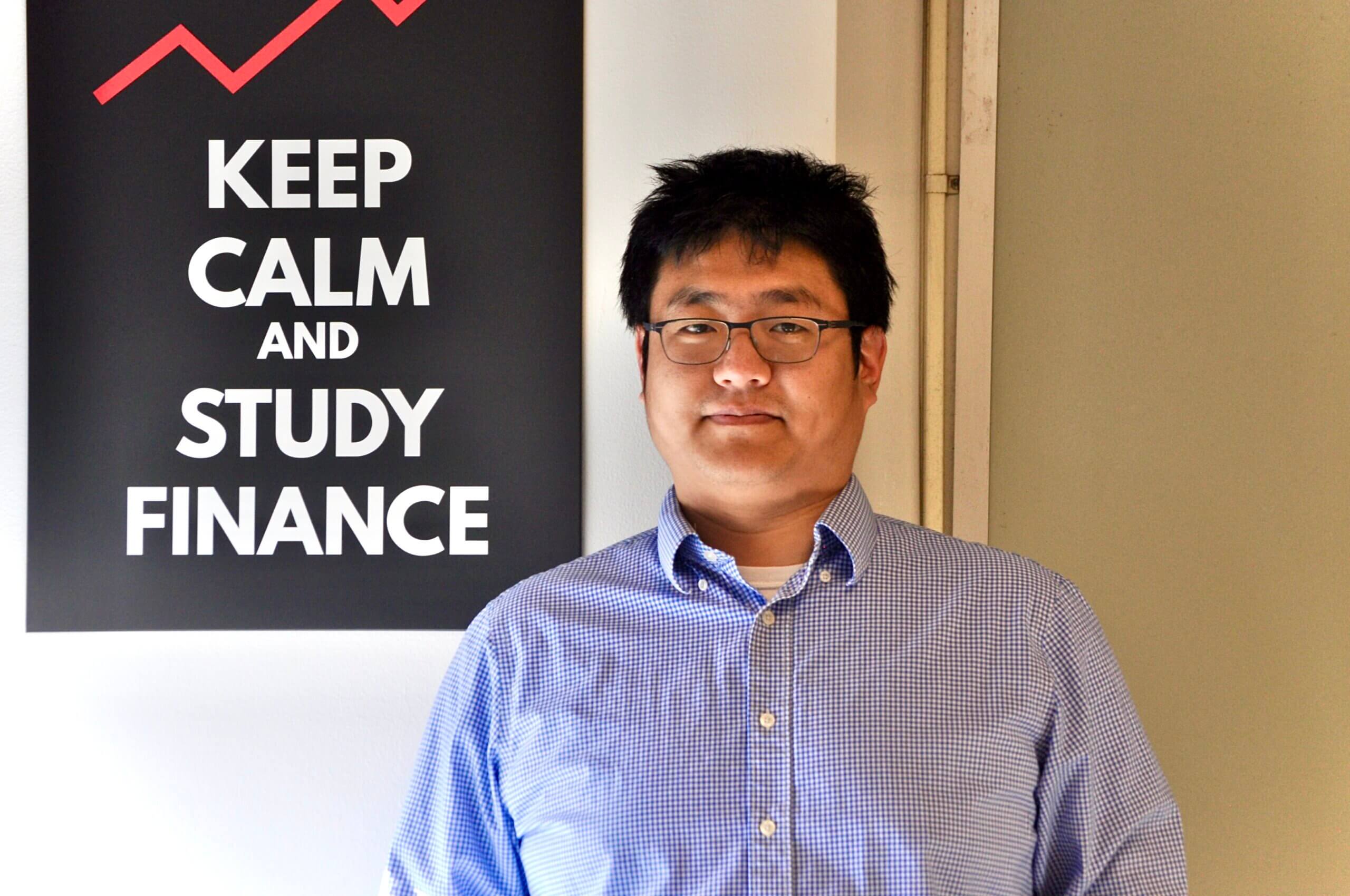
Peng said he is hopeful that students will be offered more personal finance classes, although he said that would mean another course would get cut. Because there are no required certifications to teach personal finance, Peng said this might deter teachers from stepping up at their schools to teach such a course.
“The bottleneck is now we need more teachers who can teach this course,” Peng said. “It’s hard to find teachers to teach personal finance.”
But Peng has a passion for the subject and is enrolled in a financial literacy course at the Teachers College at Columbia University to network with like-minded educators.
“I think there’s room for a lot of growth,” Peng said. “I think it’s my job to expand this in the school.”
Peng relies heavily on Next Gen Personal Finance, a Palo Alto-based nonprofit that offers a free personal finance, math, and economics curriculum for middle and high schoolers. Peng said one of the founders had even reached out to him and encouraged him to continue expanding the course at Stuyvesant High School.
Tim Ranzetta, one of the cofounders, highlighted a few sections that students will have a chance to learn from through Next Gen, such as the underpinnings of credit card agreements, investing in and the history of the stock market, monetary tradeoffs, or a game that helps them navigate through college.
“We never teach kids how to read the fine print,” Ranzetta said, adding that it is something that needs to change. “We’re giving them an opportunity to really dive in deep.”
Around 800 teachers from New York City have expressed interest in Next Gen Personal Finance since it was created in 2017. Roughly 200 teachers are using the curriculum in New York City schools, possibly as an elective or as part of another class, Ranzetta told amNewYork Metro.
There are currently plans to expand the Next Gen Personal Finance curriculum into more New York City public schools. The goal is to require all high school students in the U.S. to take one semester-long personal finance course before they graduate by 2030.
William Vongphanith, a student in the personal finance course, said he signed up because he was looking for a more well-rounded senior year.
“I felt like it was completely new and different to what’s normally taught,” Vongphanith said. “Because it’s a school that’s very academically focused, you wouldn’t expect it to teach something like personal finance.”
This past semester, Peng taught his personal finance students about bank accounts, debit and credit cards, investing, budgeting, saving for retirement, as well as applying for and managing student loans in college. Several students told amNewYork Metro that they thoroughly enjoyed learning about taxes.
“He turned a boring topic into a very interesting one,” said Vongphanith, of learning about taxes.
One recent project Peng assigned to his students was a group project uncovering all the strategies that advertisers and marketers use to promote their products and brands.
Vongphanith’s group looked into how fountain pens are branded and marketed to consumers.
“A lot of people are not aware of these subtle, subconscious things,” Vongphanith said. “I think this project really taught us about being attentive to advertising and making sure they don’t overwhelm rational thinking.”
Khoklov has most enjoyed learning about making major financial decisions, including buying and renting an apartment and purchasing a car. She said learning the realities about college loans was the most helpful, from assessing how much college truly costs to the kind of loans that students can apply for. Now, she’s hoping to go deeper into investing topics and “about different ways to build up your investor portfolio.”
“I’m so grateful that I took a non-conventional path,” Khoklov said. “I honestly think that personal finance should be a required course in every school.”
Singhal acknowledged how privileged Stuyvesant High School students are and that smaller schools and schools with predominantly Black and brown students might not have similar access to financial literacy in their schools.
“Students from the lower-income backgrounds are the ones who almost need this more, right?,” Singhal said. “I think it’s important to provide that education to all students, and especially those in low-income communities.”
